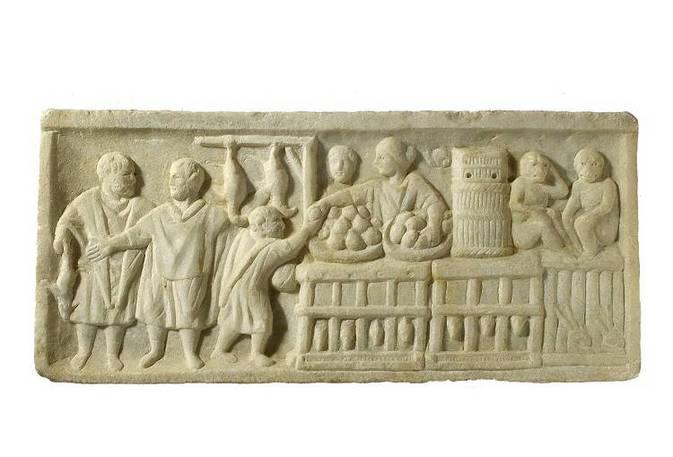


ROME – “It is essential to protect the Italian characteristics and the quality of Italian foods, including within the European Union,” Luigi Pio Scordamaglia, who is president of Federalimentare, told Italian food producers meeting in Milan for the third edition of the Forum on Food and Made in Italy on June 30. “Otherwise the risks are huge,” he warned.
An example of the problems facing Italy food producers today: the EU Commission’s decision last month to allow cheese production utilizing dried (and tasteless) rather than fresh milk. Despite the fracas produced here by the decision, this is only the last step in a quarrel dating back years, and the sense is only that cheese production utilizing dried milk is being made legal; fortunately, the ruling does not regard those cheeses marked Denominazione di Origine Protetta (DOP, or guaranteed production).
Small wonder, however, that the Italians care. With earnings of over $38 billion, last year’s exports of Italian foods surged upward by 2.7% over 2013. There is still room for improvement, however. Although Italian food exports are greater than Spain’s, both Germany, with export earnings of $61 billion, and France, $47 billion, currently earn significantly more than does Italy. “Germany actually exports more orange juice than we do,” Scordamaglia complained.
These are among the topics currently under debate at Expo 2015 in Milan, whose theme, feeding the planet, is only one of the reminders of Italy’s great culinary heritage. In Rome itself a new exhibition called “Nutrire l’Impero, Storie di Alimentazione da Roma e Pompei” (Nourishing the Empire, Stories of Alimentation from Rome and Pompeii) shows the ancestral building blocks behind the high quality of Italian foodstuffs. The exhibition, open through November 15, opened July 2 at the Ara Pacis Museum, and is an homage to the Expo world’s fair underway in Milan.
At the height of empire, when Rome was home to one million people, about one out of five received subsidized bread. As the exhibition illustrates, this was early globalization. Although the mineral-rich lands surrounding Vesuvius produced their share, the bulk of the grain production feeding Rome came from Egypt and Tunisia.
From the ports at Alexandria and Carthage great sailing vessels brought two-thirds of the grain required, but because Rome had no secure port of its own, for centuries most of the goods were offloaded at Naples south of Rome or at Civitavecchia north of Rome.
From there they were placed onto smaller boats before being loaded for the third time onto
river barges small enough to ply the Tiber upriver port to the port at Testaccio, near the Roman Fora. This complex navigation system was simplified under the emperor Claudius (Tiberius Claudius Drusus Nero Germanicus, 10 BC to AD 54), who launched a decade of construction in 42 AD of an important artificial harbor near Ostia, where the large sailing vessels could finally dock.
Archaeologists from Italy and the University of Southhampton working on excavations of that port have contributed important findings on public view for the first time. A digital reconstruction of that port near Ostia is on view, and the Mediterranean sea routes to reach there are illustrated in new maps prepared for the exhibition.
By the 3d century AD Roman citizens were being given other commodities besides bread, such as olive oil, wine and occasionally meat. The wealthier Romans enjoyed such delicacies as garum (the sauce made from seasoned, aged tiny fish). They also consumed imported wine from Cyprus, Crete and Gaul as well as the finer wines produced in the Vesuvian neighborhood plus olive oil from Andalusia, honey from Greece and other delicacies from Portugal to the West and as far away as the Eastern Mediterranean. Each commodity arriving was packed for shipping into a differently shaped amphora of baked clay, with the varieties exhibited.
From mass food distribution, the exhibition also illustrates the rich man’s banquet in a luxurious triclinium, or dining area with three benches for reclining. The finely frescoed walls of one of the dining rooms discovered in a luxury inn at Murecine, a river port near Pompeii, make a spectacular show. On view also are extraordinarily fine silverware from that same inn (only now returned after five years of exhibition at the Metropolitan Museum in New York) along with the strongbox found in the home of one of the wealthiest inhabitants of Pompeii.
For most people, street food had to suffice, as is thoroughly documented at ancient Pompeii and Herculaneum. Here there was almost always a display counter and a brick oven for heating food; at night these caupone, as they were called, were locked with a collapsing gate. In some of these small inns there was gambling in a back room, as is documented by fresco paintings.
Curators are Claudio Parisi Presicce and Orietta Rossini. A catalogue is published by L’Erma di Bretschneider. See: www.arapacis.it [2] and twitter @museiincomune #nutrirelimpero.
In a related exhibition underway in the evocative halls of Trajan’s Forum in Rome, overlooking the Forum, fashions are on view – that is, how foods have been used in Italiab fashion over the decades, from shiny strawberry buttons to giant lemon prints on silk frocks.
Source URL: http://test.casaitaliananyu.org/magazine/focus/art-culture/article/foodies-forever-harking-back-ancient-rome
Links
[1] http://test.casaitaliananyu.org/files/nutrirebassorilievo1436367437jpg
[2] http://www.arapacis.it